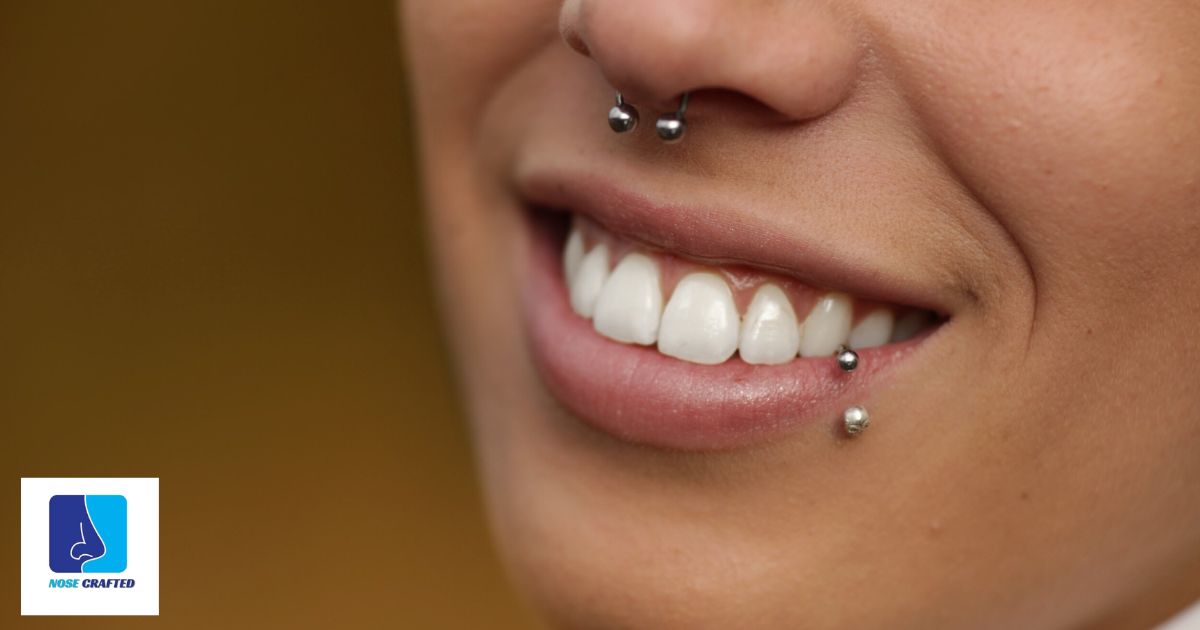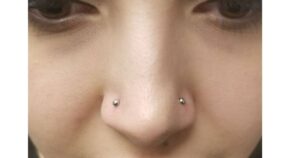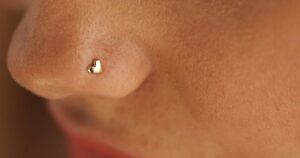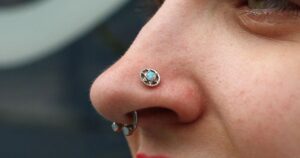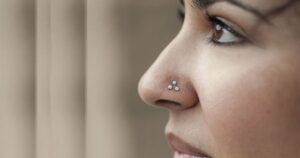Nose piercing involves the insertion of a small stud or ring through the skin or cartilage of the nose. It is a form of body modification and a popular fashion statement. People choose different types of nose piercings, such as nostril or septum piercings, for personal expression and cultural significance. Careful aftercare is essential to prevent infections and ensure proper healing.
Ever wondered about the quirks of nose piercings and medical procedures? If you’re rocking a nose stud or ring, you might be asking, Do I have to remove my nose piercing for an MRI? The answer might surprise you! Discover the quick facts and essential tips for navigating nose piercings and medical scans.
When facing an MRI, individuals with nose piercings often wonder whether they need to remove their jewelry. The answer is generally yes, as metal can interfere with the imaging process. It’s a simple precaution to ensure a smooth and accurate MRI experience. Always consult with healthcare professionals for personalized advice based on your specific situation.
Understanding MRI Procedures
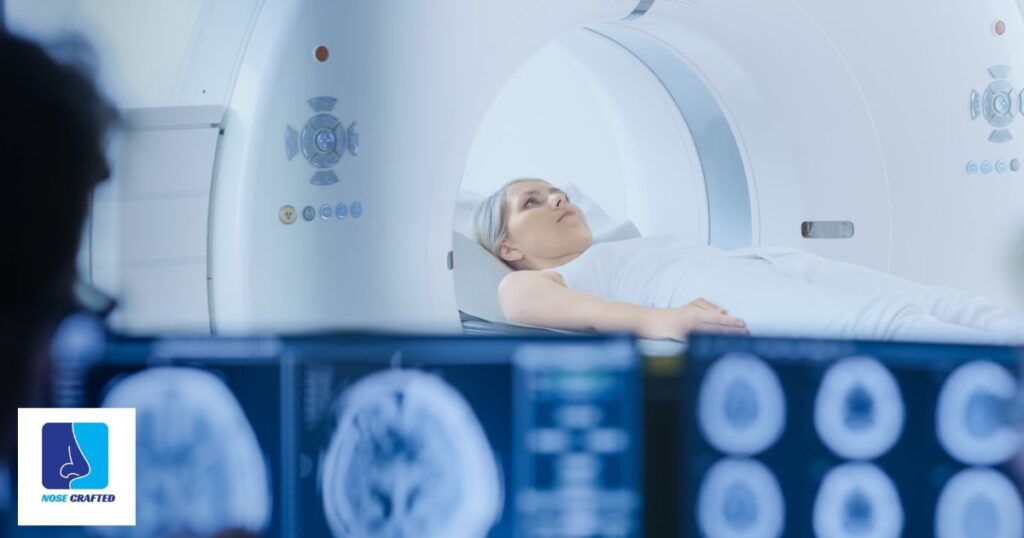
MRI, or Magnetic Resonance Imaging, is a medical diagnostic procedure that uses powerful magnets and radio waves to create detailed images of the inside of the body. Unlike X-rays or CT scans, MRIs do not use ionizing radiation, making them safer for frequent use. The process involves the patient lying inside a large, cylindrical machine while radio waves and magnetic fields generate images of the targeted area.
To ensure accurate results, it is crucial for patients to follow specific guidelines during an MRI. This often includes removing metal objects, as they can interfere with the magnetic fields and compromise the quality of the images. Understanding these basic principles of MRI procedures helps individuals prepare for the scan, ensuring a smooth and effective diagnostic process.
Insight into Magnetic Resonance Imaging (MRI)
MRI, or Magnetic Resonance Imaging, is a non-invasive medical imaging technique that uses powerful magnets and radio waves to create detailed pictures of the inside of the body. It provides a comprehensive view of soft tissues, organs, and structures, making it valuable for diagnosing a wide range of medical conditions. Unlike X-rays or CT scans, MRI does not use ionizing radiation, making it a safer option for repeated imaging when necessary.
The Role of Metal in MRI Interference
The presence of metal poses a potential challenge during MRI procedures. Magnetic Resonance Imaging relies on powerful magnets, and metal objects, including nose piercings, can distort the magnetic field, compromising image quality. To ensure accurate and reliable results, it is generally necessary to remove metal, highlighting the critical role of understanding and managing potential interference in MRI scans.
Concerns with Nose Piercings and MRI
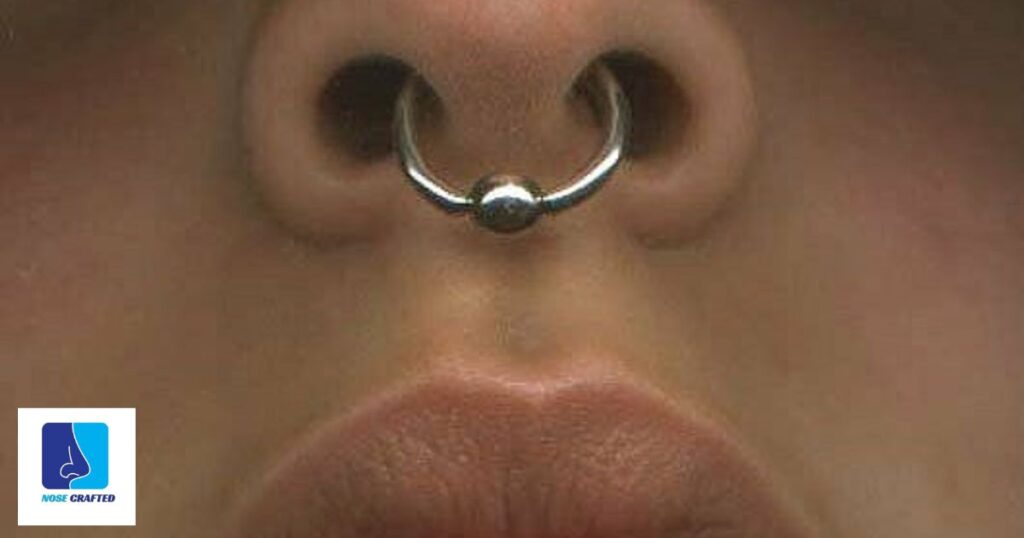
Many individuals with nose piercings express concerns when faced with the prospect of undergoing an MRI. The primary worry revolves around the presence of metal in the piercing, as MRI machines utilize strong magnetic fields. This concern stems from the potential for metal interference, which could compromise the quality of the imaging or even pose safety risks to the individual.
While modern medical practices are designed to ensure patient safety, it is essential to address these concerns and consider the impact of nose piercings on MRI procedures. Understanding the specific risks associated with metal interference can empower individuals to make informed decisions about their piercings and take appropriate steps to prepare for an MRI, such as temporary removal of the jewelry.
Why Nose Piercings Raise Questions
- Nose piercings, often made of metal, can potentially interfere with the accuracy of MRI imaging, prompting concerns about diagnostic precision.
- The magnetic nature of nose piercing jewelry may pose risks during an MRI, leading to questions about the potential movement or displacement of the metal.
- The primary concern is ensuring the safety of individuals undergoing MRI scans, as metallic objects can heat up and cause harm in the strong magnetic fields.
- Nose piercings might distort MRI images, creating challenges for healthcare professionals in accurately interpreting the results.
- Addressing concerns about nose piercings in advance ensures a smoother MRI procedure, minimizing the need for interruptions or additional safety measures.
- Raising questions about nose piercings fosters open communication with healthcare staff, allowing for proper preparation and guidance before the MRI.
- Identifying potential issues prompts healthcare providers to take preventive measures, ensuring a secure and effective MRI experience for individuals with nose piercings.
Potential Risks and Impacts on Imaging Quality
When it comes to nose piercings and MRI procedures, potential risks arise due to the interference of metal, which can compromise the imaging quality. The magnetic fields in an MRI may cause discomfort or distort the images if the nose piercing contains metal. Ensuring proper removal of jewelry minimizes these risks, contributing to a more accurate and reliable imaging experience.
The Need to Remove Nose Piercing
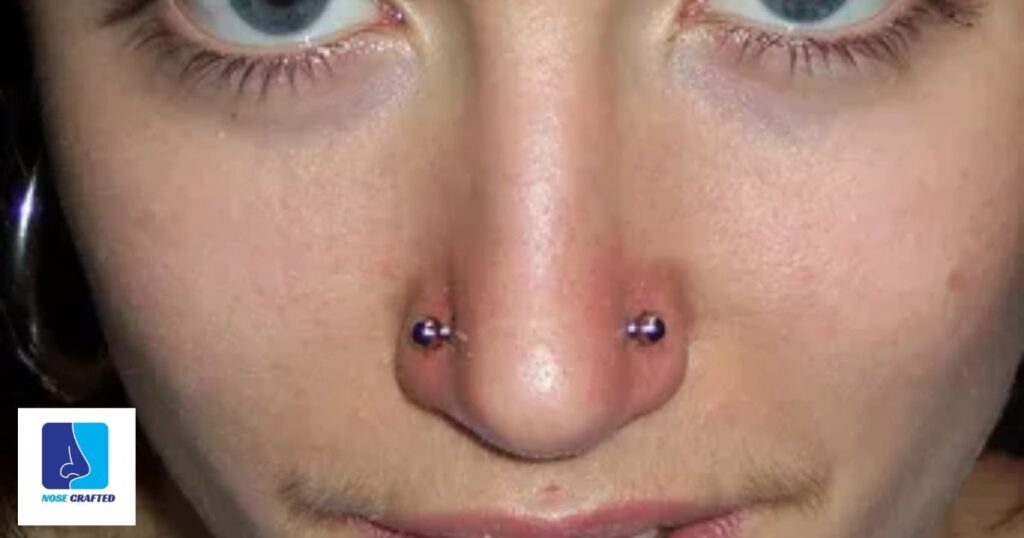
When it comes to undergoing an MRI, it’s crucial to address the need to remove a nose piercing. MRI machines use powerful magnets to create detailed images, and metal objects can interfere with this process. Nose piercings, typically made of metal, can distort the images and potentially pose risks to both the individual and the accuracy of the scan.
Removing a nose piercing before an MRI is a simple precautionary measure. Many healthcare facilities recommend this step to ensure the procedure goes smoothly and produces accurate results. Temporary removal not only aids in preserving the quality of the imaging but also contributes to the overall safety and effectiveness of the MRI experience for individuals with nose piercings.
General Guidelines for MRI Preparation
When gearing up for an MRI, it’s essential to adhere to general guidelines for a seamless and accurate imaging process. The removal of metallic objects, such as nose piercings, is commonly advised to prevent any potential interference with the magnetic resonance. This not only ensures the dependability of the results but also plays a crucial role in maintaining a safe and effective medical procedure. If you’re curious to learn more about nose piercings and their impact on MRI procedures, feel free to explore additional information about nose piercings.
Ensuring a Smooth MRI Experience
Ensuring a smooth MRI experience involves adhering to guidelines that prioritize both safety and accurate imaging. This process often includes the necessary step of removing any metal objects, such as nose piercings, to prevent interference with the magnetic resonance. Following healthcare professionals’ advice and being mindful of preparation instructions contribute to a seamless and successful MRI procedure.
Personalized Advice

In the realm of nose piercings and MRI concerns, personalized advice plays a crucial role in ensuring a smooth experience. Each individual’s health and piercing situation are unique, making it essential to consult healthcare professionals for tailored guidance. Whether considering temporary removal solutions or exploring alternative options, personalized advice takes into account specific circumstances to strike a balance between maintaining personal style and prioritizing health during MRI procedures.
When seeking personalized advice, individuals should openly discuss their concerns and inquire about the best course of action with their healthcare providers. These experts can offer insights into the potential risks, advise on safe removal techniques, and provide practical tips for navigating MRI preparations with a nose piercing. Ultimately, personalized advice empowers individuals to make informed decisions that align with their health needs while still embracing their individuality.
Consulting Healthcare Professionals
| Consulting Healthcare Professionals |
| 1. Timing |
| – Schedule a consultation well in advance of the MRI to discuss concerns and receive personalized advice. |
| 2. Medical History |
| – Provide your healthcare professional with a detailed medical history, including information about your nose piercing. |
| 3. Piercing Specifics |
| – Discuss the type of nose piercing, the material of the jewelry, and any potential complications during an MRI. |
| 4. Individual Assessment |
| – Your healthcare professional will assess your specific situation and provide recommendations tailored to your health and piercing. |
| 5. Alternative Precautions |
| – Explore alternative measures or precautions that can be taken to ensure a successful MRI without compromising your piercing. |
| 6. Follow-Up Guidance |
Tailoring Recommendations to Individual Cases
Tailoring recommendations to individual cases is essential for providing personalized and effective guidance. Every person’s health, lifestyle, and piercing situation are unique, influencing the approach needed for MRI preparations. Consulting with healthcare professionals ensures that specific considerations are taken into account, guaranteeing a safe and customized experience for individuals with nose piercings.
Practical Tips for Nose Piercing Removal
Removing a nose piercing before an MRI can be a simple yet crucial step to ensure accurate imaging results. Here are some practical tips to make the process hassle-free. It’s advisable to use non-metallic, hypoallergenic retainers as temporary replacements for your nose jewelry. These retainers allow you to maintain the piercing without causing interference during the MRI.
When it comes to the actual removal, gentle and slow movements are key. Unwind the screw or gently slide out the jewelry to avoid discomfort or potential damage to the piercing. Keep in mind that if you encounter any difficulties or discomfort, seeking assistance from a professional piercer or healthcare provider is always a wise choice. Following these practical tips ensures a smooth experience, allowing you to balance your personal style with the necessary precautions for medical procedures like an MRI.
Safe Removal Techniques
Safe removal techniques for nose piercings involve using clean hands and tools to gently unscrew or unclasp the jewelry. It’s crucial to avoid force or sudden movements to prevent injury or damage to the piercing. Seeking guidance from a professional piercer for removal ensures a smooth and risk-free process.
Temporary Options for MRI Procedures
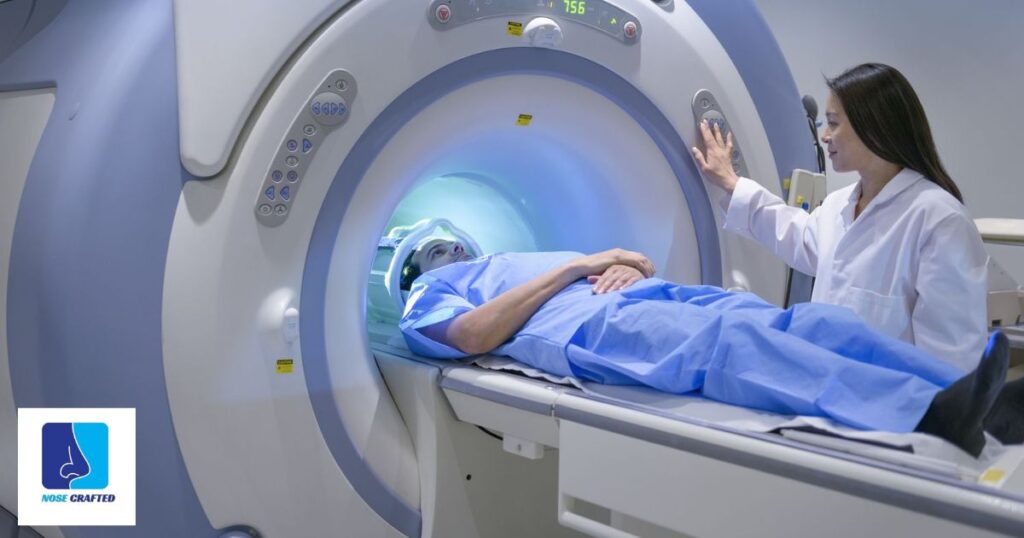
For individuals with nose piercings facing an MRI, temporary solutions can offer convenience. Opting for non-metallic retainers or using specially designed plastic studs ensures a hassle-free experience without compromising the integrity of the imaging process. These temporary options allow individuals to maintain their piercing style while adhering to necessary medical precautions during MRI procedures.
FAQ,s
Can I have an MRI with a nose piercing?
Yes, you can have an MRI with a nose piercing, but it’s generally recommended to remove the jewelry to prevent any potential interference with the imaging process.
What happens if you can’t take out a piercing for an MRI?
If you can’t remove a piercing for an MRI, alternative options like non-metallic retainers are recommended to prevent interference with imaging accuracy.
What piercings can you wear in MRI?
Non-metallic piercings or specially designed plastic retainers are suitable for wearing during an MRI to avoid magnetic interference.
What if I can’t get my rings off for an MRI?
If you can’t remove your rings for an MRI, inform the medical staff beforehand, and they will assess the situation, providing alternative measures or solutions to ensure a safe procedure.
Conclusion
The compatibility of nose piercings with MRI procedures is a nuanced consideration that necessitates attention and understanding. As we explored the potential challenges and concerns surrounding the presence of metal in nose jewelry during an MRI, it is evident that prioritizing both style and health is crucial. The need to remove nose piercings for such medical scans stems from ensuring the accuracy of imaging and preventing any potential risks associated with metal interference.
The journey doesn’t end with the removal of nose piercings. By consulting healthcare professionals and following their personalized advice, individuals can navigate the process with confidence. The collaborative effort between patients and healthcare providers allows for tailored solutions, including temporary alternatives and precautionary measures.
